Our family has been eating a plant-based diet since November. A plant-based diet is one where we incorporate as many fruits, vegetables, beans, and selected whole grains as we can, and minimize the animal and dairy products we eat.
The big difference between a plant-based diet and a vegetarian or vegan diet, I think, is the intent. We switched to eating this way for the health benefits of it, not for any ethical reasons (which are great, but they aren’t our reasons).
As with any big change in your life, it takes a while to get the hang of it, and we’re still figuring out how to eat.
At first, when cooking with just plants, I added a lot of fat into our cooking, thinking we needed it for flavor. But then, as my weight started to increase, I realized I was doing something wrong.
So I kept reading, and took the oil out of our diets, primarily palm and coconut oils, especially pernicious as they’re full of saturated fats. As my dad says, “If it’s in solid form at room temperature, it’s at solid form in your body.”
Each week, we cook a big batch of beans and a big batch of whole grains–whole wheat pasta, quinoa, brown rice. Then, we base our meals around some kind of whole grain and/or bean, lots of green stuff, and spices.
Now that I’ve got the hang of it, we’ve been losing weight, as we need to, since I was bordering on an “overweight” designation, and Mr. ThreeYear was bordering on an “obese” designation. I have lost about 5 pounds and Mr. ThreeYear has lost about 7 pounds. It’s slow, but steady.
It doesn’t sound like it would cost very much to cook plants and grains every night, but it does. Oh, it does. So let’s dive into that. I calculated the costs weekly for our family, per person, and per serving.
Breakfast
First of all, here is what we eat, in general, for breakfast.
Breakfast: Mr. ThreeYear and I have settled on a bowl of steel-cut oatmeal with berries or banana slices on top, plus ground flaxseed and a touch of maple syrup. We eat steel-cut oats (more expensive) because they are more whole grain, giving you more fiber. We drink coffee with soy or cashew milk. The boys eat a piece of Ezekiel (sprouted) toast with jam or vegan butter.
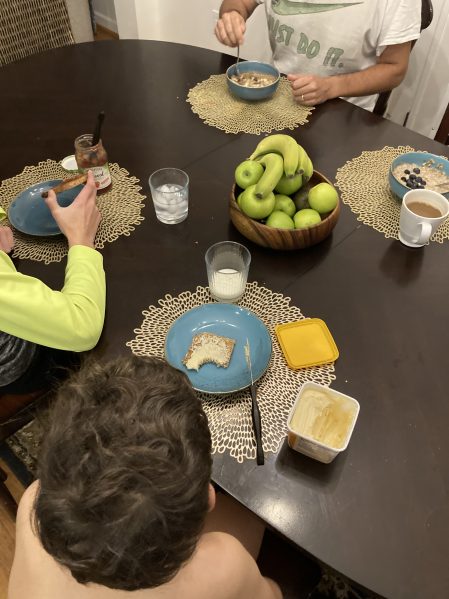
Costs for breakfasts:
- Aldi steel cut oats: (twice as expensive as regular oats) $2.19 I think for 25 oz. We need two containers per week, so total is approx. $4.50
- Maple syrup: approx. $11 at Costco. Lasts around 2-3 months, so about $1 per week
- Berries or bananas: $7 per week. Bananas are cheaper but berries are better for you. We usually only get fresh berries for the first day or so because Little ThreeYear gobbles them up as soon as he can.
- Flaxseed: pretty cheap. About $1.50 for a 16 oz. container, which lasts a month or so. $.38 per week.
- Coffee: $22 at Costco for one regular, one decaf. Lasts approx. 2 months. So, $2.75 per week.
- Soy or cashew milk: I can’t remember how much this costs! I think it is around $3 per half gallon. We go through one half gallon per week.
- Ezekial bread: one loaf per week, $4.
- Vegan butter: approx $4, lasts about 2-3 months, depending on where we use it. Let’s say $.50 per week.
- Jam: $4 per container of low-sugar jam. Lasts 2-3 months, so, $.40 per week.
Total Family Costs for Breakfast: $23.53 per week for our family of four, $5.88 per person, $.84 per serving. Breakfast costs are low, as they should be. That’s pretty cool to see just how low they are.
Lunch
Lunch: We generally eat a big salad with beans or whole grains. I put an oil-free dressing on mine made with balsamic vinegar, mustard, spices, and sugar (a must for me if there’s no oil). I know oil-free sounds terrible–it did to me, too, but it’s surprising how quickly I’ve gotten used to it. Beans are filling. And I eat a lot of them. The boys don’t eat a lot of lunch, because of their ADHD meds. They usually eat leftovers, which I pack in their lunches, or fruits, veggie snacks (cut up carrots, celery, green beans, etc), and maybe some tortilla chips.
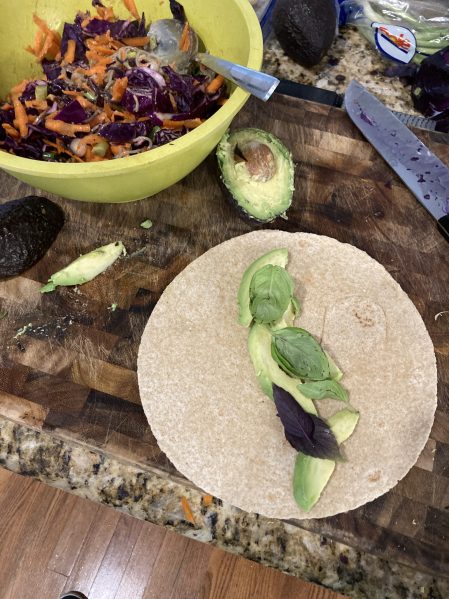
Costs for lunches:
- Bag of dried beans: $2.09 at Aldi. I make these once per week in my electric pressure cooker.
- 16 oz. Organic Spring Mix at Aldi: $3.49 per week.
- Whole-wheat grains. This is harder to measure, because we bought a big bag of Quinoa awhile ago on Amazon, we bought a big bag of brown rice at Costco awhile ago, and we just supplement with whole-wheat spaghetti. I will estimate: $1.99 for whole-wheat spaghetti at Aldi. That price might be too high. Quinoa: 10 lbs, $35.99. We use about 1/2 lb. each time we cook it, so $1.80 per use. Let’s say $3.79 per week for a mix of whole grains.
- Salad dressing: approx. $3 for vinegar that lasts a month, negligible for mustard ($.44 for a container that lasts months), and I already accounted for maple syrup cost in “Breakfast.” Weekly: $.75.
- Extras: We usually throw some nuts or olives on top of our salad. Olives: $2 per week if I get Kalamata, $.89 if I get green. I will split the difference. Nuts: $11 for a big bag at Costco, which lasts longer than a month, but I buy more than one, so I will say one bag lasts a month. Extras each week: $4.20.
- Fruit: I usually have a piece of fruit with my salad. Or leftover soup which I will account for in “Dinner.” A bag of mandarins: $4.
- I already mentioned that kids eat odds and ends for lunch. I will account for some of those costs in “Snacks” because I’m not sure how else to break them down.
Total Family Cost for Lunches: $18.32 for our family of four, but really this just accounts for what Mr. ThreeYear and I eat, so, per person, $9.16 per week, $1.31 per serving.
Dinner
Research shows that front-loading your calories, that is, eating the majority of your calories early in the day, means you eat less and burn those calories more efficiently. You burn approximately 12-15% less of a calorie at 8pm than you do at 8am. It makes sense from an evolutionary standpoint, as you were probably more likely to go out hunting in the early morning hours, when there was light, than at night, when you couldn’t see anything.
Still, dinner is a meal that still tends to be the most important for our family, as we all gather around the table together. We eat early, though, and thanks to all that fiber we chomp down at breakfast and lunch, I’m not as ravished as I was before switching to eating this way.
It’s hard to say what we “typically” eat for dinner, because it changes. But, in a week, we tend to eat at least one soup (vegetable, chili, Italian wedding, white bean and kale), one Mexican food (enchiladas, tacos, burritos), one “convenience” night (veggie burgers, vegan chicken nuggets, even pizza!-gasp!), one roasted veggies night (baked potatoes, roasted veggies, broccoli, cauli, etc.), and one Asian dish (Indian lentils, masala, curries, stir fries). I will estimate with the food I bought for this week’s meals.
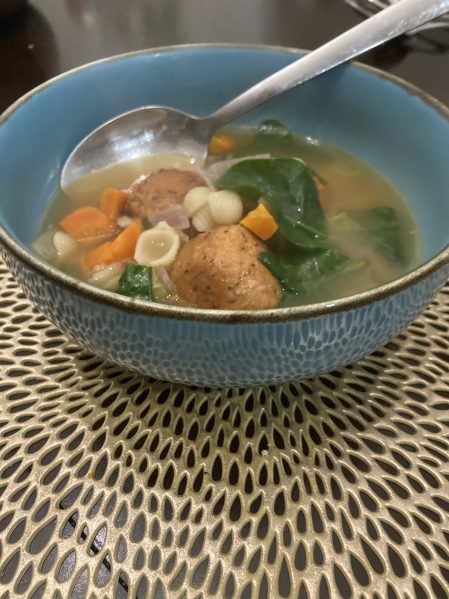
Costs for dinners:
- Meat substitutes: Veggie burgers, $3 per package for 4. Vegan chicken nuggets, $3 (but I should have bought two packages so let’s say $6), and tray of Beyond Meat meatballs, $10 from Costco (but I only use half, or 12 of the meatballs, per week). $14
- Cruciferous veggies, like broccoli and cauliflower (two heads of broc and one of cauli): $7
- Cooking veggies, like onions, carrots, celery (one bag of each): $4.50
- Other random veggies (zucchini, string beans, eggplant–changes based on season): approx. $5
- Pasta, whole wheat wraps or tacos: approx. $5
- Sweet potatoes or regular potatoes (usually one or the other): $3
- Lentils or other beans not used in salads (one bag dried lentils, 4 cans beans from Aldi): $4
- Whole grains not used at lunch (like brown rice, maybe twice per week. $17.99 for 20 lbs, we cook 1.5 cups at a time, so roughly one lb per week): $.90
- Spaghetti sauce (we use Rao’s which I buy at Costco, lots of oil, so we may switch, but it’s really good): $5
- Diced tomatoes (two large organic cans): $3
- Tofu: We don’t eat a lot of tofu yet, but use it occasionally, so I will add it here. $3
- Fats (we try not to use a lot of these, but we probably use one can of coconut milk per week, and a drizzle or two of olive oil): $1.33 per coconut milk, and $.15 for olive oil?
- Spices (these are obviously cheap, but we use a lot, so I will estimate high): $1
Total Family Costs for Dinners: $56.88, $14.22 per person, $2.03 per serving. Dinners are obviously our most expensive meal, primarily because of the meat substitutes. Right now, though, they keep the kids more stoked about eating plant-based (actual quote from Junior ThreeYear upon serving him up some Beyond Meat meatballs, “I guess being vegan isn’t so bad”). And they keep me stoked, too. Sometimes I want to eat an Italian “sausage” or burger or whatever. Yum. Also, we often eat leftovers for lunch.
Snacks
Oh, snacks. We are a snacky family. I am programmed to eat a snack around 4pm, and since the boys take ADHD meds that affect their appetites, they tend to eat a snack at 4pm after school, dinner, and then several “snacks” through the evening to fill up on the calories they didn’t get at lunch. Here are the costs for snacks that I didn’t account for in other categories.
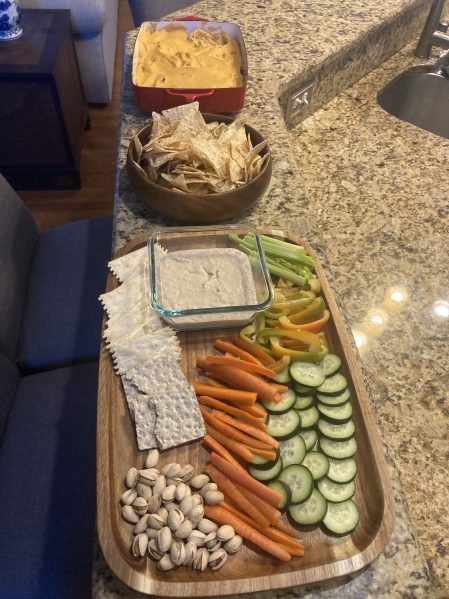
Costs for Snacks:
- Fruits: One bag of oranges, one bag of apples, one bag of grapes, one bags of lemons (that’s what I bought this week in addition to the bananas and mandarins I already counted): $14
- Berries (in addition to the berries I counted at breakfast): $3
- Graham crackers (2 boxes at Aldi, cheap): $1.80
- Tortilla chips (3 bags at Aldi, cheap): $2.76
- Salsa: $.92
- Peanuts and raisins: $4
- Homemade granola (I make it with the rolled oats, peanut butter, maple syrup already accounted for, nuts already accounted for): $2.23
Total Family Costs for Snacks: $28.71, $7.18 per person, $.71 per serving, because I estimate Mr. ThreeYear and I eat two snacks per day and the boys eat 3.
Beverages
Did you know that sodas are perhaps the biggest cause of the obesity epidemic in this country, accounting for something like 1/5 of the excess calories we consume each year? Dang, Coca-Cola. That’s a heavy burden to bear.
In our family, we are also guilty of drinking our calories, but in diet form. Supposedly diet sodas have no calories, but our bodies still treat artificial sweeteners like sugar, and drinking diet sodas causes hunger several hours after drinking them. So, the majority of our drinks are seltzers (fizzy water) but we do buy one 12-pack of Coke Zero or Diet Coke per week. Slowly but surely we are cutting this bad habit…
We also drink tea (Sleepytime Tea for Little ThreeYear before bed), wine (I had completely given alcohol up but then slowly began drinking it again, so now we buy more), and coffee, which I accounted for in breakfast costs. The kids are also allowed one gallon of organic milk per week. I am trying to wean them off but so far, haven’t had a ton of success. Although they’ve started drinking more tap water! Hooray for small wins!
- 3 twelve-packs Aldi seltzer: $6.72
- 1 diet soda: $4
- Sleepytime tea: $3
- average 2 bottles of wine per week (that may be high or low depending on the month. We get $6 Portuguese wine at Costco.): $12
Total Family Costs for Beverages: $25.72. I can’t really account for cost per person since the kids don’t drink the wine, but it averages $6.43 per week. Approx. $.34 per serving.
Total Costs Per Week for Food: $153.16
If we total all of those costs up, we get a cost that is over my weekly allotted cost for food, but just barely. The thing is, I am sure I have left out some foods that I buy–like I just remembered I didn’t include the occasional chocolate bar that I buy, and I didn’t account for vegan yoghurt that I occasionally buy. Still, it is possible that I overestimated costs for dinners, because we do not always eat such expensive meat substitutes, for example. Some weeks we eat a cheaper lentil curry, soup, tacos menu. It varies a lot.
I have to buy much more than I used to of certain items, like fruits and vegetables. As I’m totaling up my groceries as I buy them (do you do that?), it’s common for me to be at $50 or $60 before I’m even out of the produce section! But I don’t buy a ton in the rest of the store, so I’m having to reprogram my brain that it’s okay.
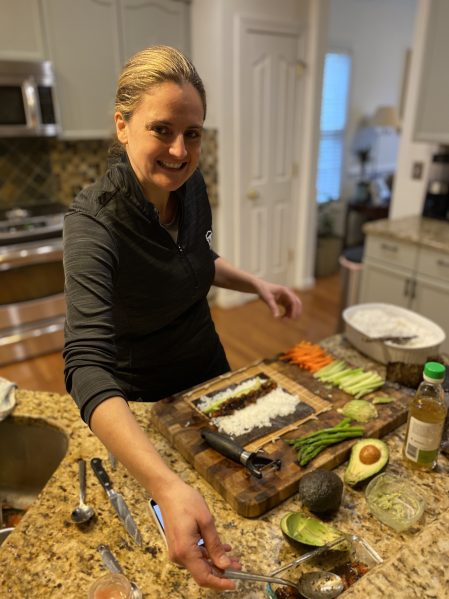
Funny Things that Have Happened to Us Since Switching to Plant-Based
- Little ThreeYear told everyone in his class that Chik-Fil-A is bad for you and will kill you. #Parentingfail. Rest assured we had a long talk about how we choose foods that are better for our health but that doesn’t mean that the other foods we don’t eat are going to kill you. It’s really hard for kids to get shades of gray on this.
- Because of his apparent many conversations with classmates, overheard by faculty, my faculty member who just had a baby thinks we are health nuts (I guess we are now–I mean, we eschew oil) and didn’t really want me to bring her food after she had a baby. 🙂 I eventually did bring her food and she said she really liked it?
- Our friends keep asking us when we’re going to quit this “stupid vegan phase.”
- Many friends and family have very graciously eaten plant-based with us or cooked plant-based for us and tried meat substitutes. Meat substitutes are amazing, by the way! Even with all the extra fat and stuff, they are so much better for your body and taste just like the real thing. Current favorite–Beyond Meat’s Italian sausage.
- I am convinced I am more patient. Truly, my stress levels have come down and I feel calmer. This is not just me imagining things–there is research to back this up. That has probably been the best thing about going plant-based aside from the weight loss.
Have I been able to stick to my new, $600 per month budget with a vegan diet? No, I have busted my budget several months in a row. But I am giving myself some time, because this is a whole new way to cook and eat. It takes a lot more (expensive) fruit to fill up, but I can also incorporate (really inexpensive) bags of beans, so I feel like with a bit more learning, I can keep my grocery spending reasonable. And our food waste has been down, which means we are wasting less. Score!
How are you doing this February? Trying anything new? I would love to hear!

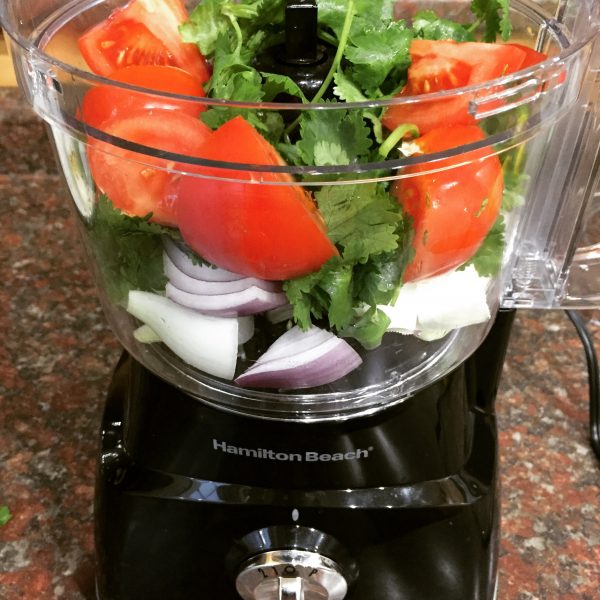

This is a great post! I’m so happy to hear that you and your family are feeling good on your plant-based diet, while also not breaking the bank. Double win! You might see if you have a local farmer’s market nearby… that’s often fresher and sometimes cheaper than the grocery store. 🙂
And as a brief aside some someone who was plant-based for just under five years, listen your body. I worked with a dietician during that time and still ended up with nutritional deficiencies and health consequences, so switched to a paleo diet. My boyfriend, on the other hand, has been vegetarian for over 20 years and has had no problems, so it definitely varies by person. The more veggies, the better! However, some people have trouble off meat, so don’t feel ashamed if you incorporate meat on occasion or often.
Love what you’re doing hear! Keep it up! 🙂
Thanks Erin! Great to hear your experience, and it’s a good reminder that diet doesn’t have to be all-or-nothing. It’s also a good reminder that we have to keep taking our B12. 🙂 We haven’t yet made the farmer’s market part of our routine. Maybe we will get there more this summer.
Ahh your newsletter came just as I was popping in to check my email! 🙂 Love this cost breakdown, I’d love to do one myself. I’m definitely spending less on my grocery budget by simplifying and finding a few meals to rotate. Salad for dinner every night during the week? (I’ve figured out how to divide a head of lettuce in 4ths for Monday to Thursday night.) I’ve always got a bag of quinoa, some pasta, and some rice in the cupboard so all I need to do is buy veggies to throw on. Two MUST TRY recipes I’ve discovered:
– https://food52.com/recipes/33651-indian-red-beans-and-rice-rajma
– https://www.budgetbytes.com/roasted-cauliflower-and-quinoa-salad/
There’s butter in that 2nd one but you can make it with vegan butter or some other oil. Trade out the cauliflower for broccoli, or some days I just do the quinoa with beets and chopped green onion on top.
I LOL’d a bit at the Chick-Fil-A comment. Kids really don’t quite get the gray area do they? 😀
Dina, yum yum! Definitely tryout out these recipes. THANKS! Yep, we’ve started throwing those staples together–quinoa, veggies, pasta, veggies, some kind of sauce… it’s a learning process but it’s a delicious one. 🙂
That’s a great cost breakdown! I haven’t done the maths, but I think my food expenses have gone up slightly since ditching the meat and animal products a few months ago. Some of this is down to more expensive ingredients I guess, although perhaps it’s just perception as I’m spending more at the supermarket yet nothing at the butchers? Once I got my cooking dialled, I haven’t missed meat at all.